The words “full moon” in many languages

It is said that there are more than 6,000 languages worldwide (this is hard to imagine) and it is a fascinating concept to think, there are probably as many words for “full moon”.
Here we begin our little journey to the full moon. A few words about the fascinating quest of the greater purpose, that includes the full moon circulating through our lives. In layman’s terms and not always scientific (astronomy experts – don’t look too closely!). We would like to wish you illuminating moments. Enjoy!


It is said that there are more than 6,000 languages worldwide (this is hard to imagine) and it is a fascinating concept to think, there are probably as many words for “full moon”.
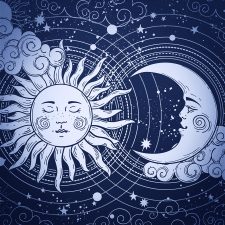
A full moon is when the Sun and the Moon are facing opposite, being in opposite direction from an Earth perspective.
This might feel astonishing if one imagines that the Moon is on one side, the Sun on the other and the Earth in between? Shouldn’t the Earth throw a shadow onto the Moon? Bingo – this is exactly what she does! But only when the Moon is exactly on the Earth orbit, the so called “ecliptic”. When this takes place, we speak of a lunar eclipse!
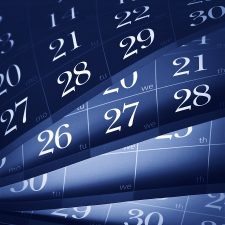
The Moon needs 27.33 days to circle around the Earth. Something that is also referred to as “sidereal time”. But because the Earth orbits the Sun, just like the Moon orbits the Earth, the Moon has to travel two further days in order to resume the same position to the Earth and Sun. This is then called the “sidereal time”. In order to determine the point of time of the reoccurring full moon, the sidereal time serves as basis.
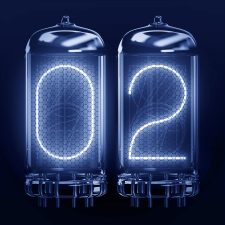
We already know now that the moon month is mostly shorter than the calendar month, being on average approximately 29.5 days. If full moon falls on the first or second of a month, it is possible that another full moon occurs in the same month, for instance in July 2004:
Friday, 2 July 2004, 01:08:54 pm
Saturday, 31 July 2004, 08:05:06 pm
This event is also known as “blue moon”.

The answer is: “everywhere at the same time”. This refers to the so called Universal Time (UT) though, which is used for general astronomical events. We have already learnt that full moon is an astronomical event, where the moon, sun and the earth play a role by being in a specific position. So, full moon takes place at a specific time in the outer space. This point of time is specified by astronomers namely by the Universal Time.

There are multiple ways of approaching this question. If we look at it from a purely theoretical standpoint, we might be tempted to say that the full moon is infinitely short, since the phases of the moon are changing continuously. The moon is not yet quite full shortly before the full moon, and is already waning shortly afterwards.
However, there is a practical aspect that lets us quantify the full moon as a finite and measurable span of time: Since the Sun is significantly bigger than the Moon, its rays are able to reach just a little over half of the Moon’s surface. This means that the timespan in which the visible side of the Moon’s surface is irradiated (as seen from Earth) is longer than infinitely short.

Whether scientists, astrologers or esoterics, they agree on one thing: the moon influences earth and life on earth. For instance, it regulates the tides through its magnetism. Also continents feel the consequence of this magnetism and either raise or lower their position sometimes up to 26 cm.

In nature it is a known fact: for some animal species, mating takes place at full moon. However, the examples that can be found on this subject are rather simple. Full moon serves in some cases indirectly as the cause (for instance through the high water levels during the tides that the horseshoe crab uses to deposit its eggs) or also as the signal for both sexes of a species to begin at the exact same time to safeguard their future existence (a particular type of fly or also corals). It is understood that also wolves are led by full moon when it is time to mate.

… that people are looking for an argument at full moon or are especially happy …
… that if full moon is surrounded by a haze, a person dies …
… that you raise your hat three times to the moon (being a man) or you make a curtsey (being a woman), in order to protect yourself from misfortune until the next full moon …
… that whoever does not chink glasses with full moon at least once, does not deserve any happiness [Greek toast] …
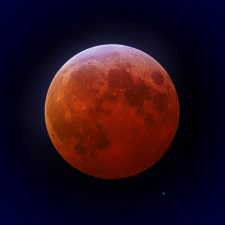
During a lunar eclipse, the Moon moves through the shadow of the Earth. Which means, that the Earth is positioned quite exactly between the Sun and Moon and casts its shadow onto the Moon. This is only possible at full moon and if some other requirements are met. Depending on whether the moon passes the partial or the core shadow of the Earth, we speak of a partial or total lunar eclipse.

The new moon is the opposite pole to the full moon, being the time when the Moon is not visible in the sky to us people. Maybe this is why we pay less attention to it, because what you don’t see is less prevalent in our awareness.
However, there is one aspect, which continues to lend significance and fascination to the new moon. It is the word »new« and the described moment of renewal and of a new beginning. This word can be found in different languages:
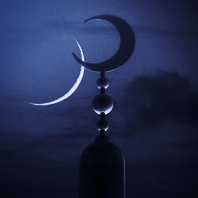
As a general rule, we live our secular life by a so-called solar calendar, the Gregorian calendar, which determines our calculation of time since the end of the 16th century. The biggest advantage of a solar calendar is its connection to the seasons: it is warm in summer, cold in winter, at least this is how it should be … at times however, as we all know, the weather goes crazy and sunshine is long-awaited in summer and snow stays away in winter. The seasons are connected to the (solar) calendar months.

When looking at the Moon, how slowly it travels across the night sky, one could easily forget that we are moving with a staggering speed through space with our Earth and our Moon. Furthermore, there is the rotation of the orbs to each other, which remains hidden from our senses as well. Only the mind knows of these astronomic connections and only for a short period of time (measured by our existence).

One obviously has the night sky before one’s eyes when thinking of the full moon. In reality, however, the event »full moon« has nothing to do with the fact whether it is night or day for us. The full moon occurs when Sun – Earth – Moon form a line in space and exactly in this order. The Earth lies in fact between the Sun and the Moon. Depending on what time this happens, it is night on the hemisphere that is turned away from the Sun and you can see the Moon in the sky. But on the hemisphere that is turned towards the sun it is daytime at this point and the full moon cannot be seen, because when observed from this position it is actually behind the Earth.
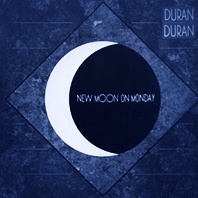
In 1984, the song »New Moon on Monday« was released by the British music group Duran Duran. This was deep in the 80’s, when men and women artistically draped their hair and wore gear that makes you chuckle looking at them from today’s perspective. The ambitious music video tells the plot of an underground rebel group called »La Luna«, who fight against a military regime, and who call upon the power of the Moon to help them. Back then, this was shot in the French village Noyers with great efforts during winter temperatures.
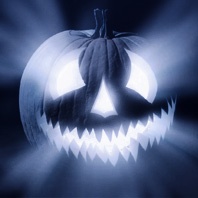
In 2020 the full moon will fall on a 31st October and a Halloween party can take place in the full moon light. The imagination of people fits this well apparently, because no matter where you look, the full moon can be seen in all portrayals of Halloween. In historical terms, there is no connection, however. Halloween is the evening before All Saints’ Day (originally: »All Hallows’ Eve«). The basic idea of this festival is the remembrance of saints and it is connected to the wish to drive out bad spirits. This is how the gruesome costumes came into play.

After we have already mentioned the lunate bone, one of the eight human carpal bones, which has been named after the Moon, due to its sickle shape, we would like to take another look at the human hand – this time at the fingernails. Lo and behold: here too, the name was inspired by the Moon. The white area of the nail, shaped like a half-moon is called »lunula« (lat. little moon) and incidentally, can be found on toenails as well. The lunula is differently pronounced with every human being, with some you may only see it on the thumb, with others you can see it on all fingers and toes.

Other than the moonstone, there are more minerals with the Moon being part of their name: the moonlight topaz. The topaz is a compound of aluminum, fluorine and silicon and has the hardness value of 8, on the Mohs scale of mineral hardness from 1 (= selenite) to 10 (= diamond). Which means it is a very hard mineral. Topazes exist worldwide, but most findings originate in Brazil. When conditions are favorable for the growth of this mineral, their weight can easily reach up to 220 lb and more. The biggest topaz that was ever found, was 3.3 ft long and weighed 2.5 tons (Mozambique, Africa).

Today, we would like to focus on a more culinary subject of everything that can be eaten or drunk and is prepared in connection with the full moon. Apparently, there is a multitude of vendors (especially in Switzerland), who regularly manufacture their products at the full moon and who detect that the quality of their foods differs from the foods, which have not been produced in connection with any lunar happenings. These products appear to sell accordingly and successfully. We have not been able to fathom out whether this is really related to the Moon – it might also be that the consciousness of the acting persons is different, or that the customers bring along the appropriate willingness to appreciate the reference to the full moon.
It is 1969 – John Fogerty, the front man and lead guitarist of the rock band Creedence Clearwater Revival (CCR) writes the song »Bad Moon Rising«. He was inspired by a black-and-white movie called »The Devil and Daniel Webster«, in which almost an entire city is obliterated by a hurricane. Fogerty creates gloomy lyrics that warn about the threat of destruction and its bringer of ill luck, being the rising Moon.